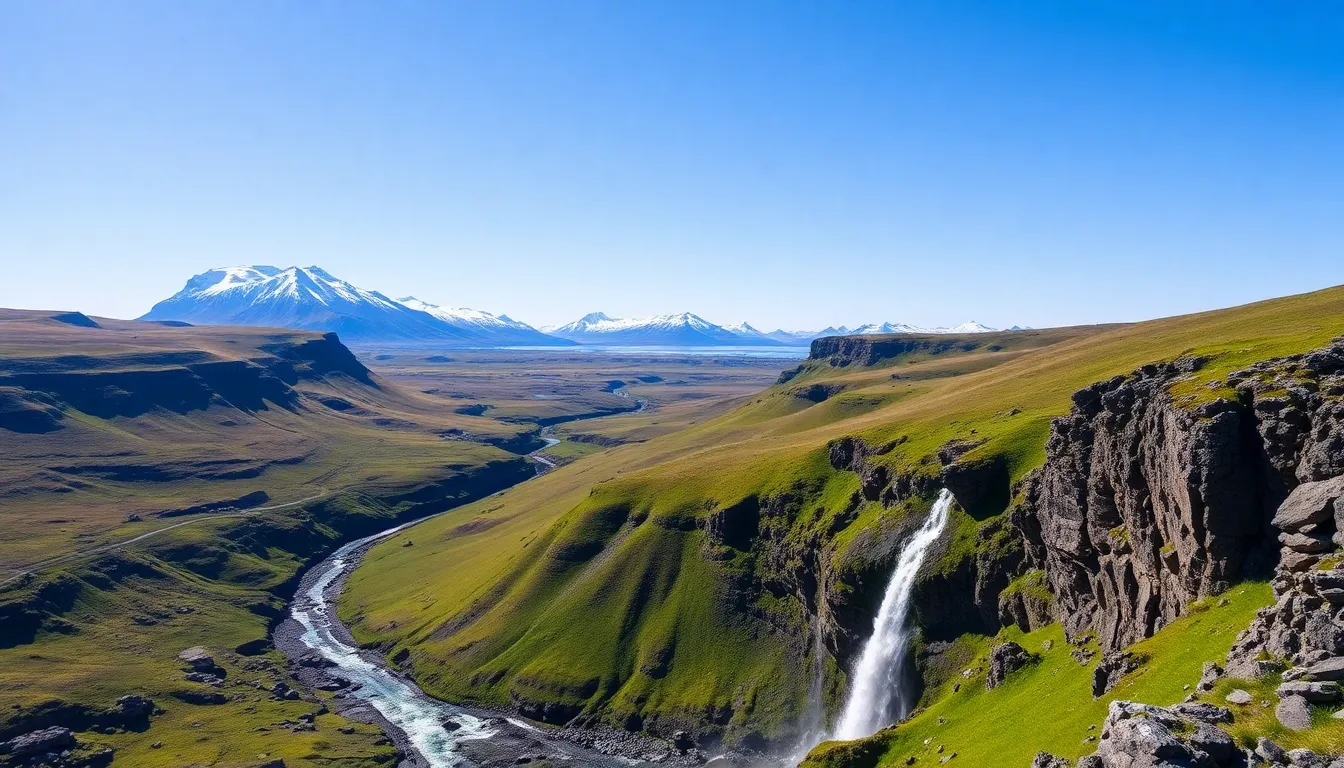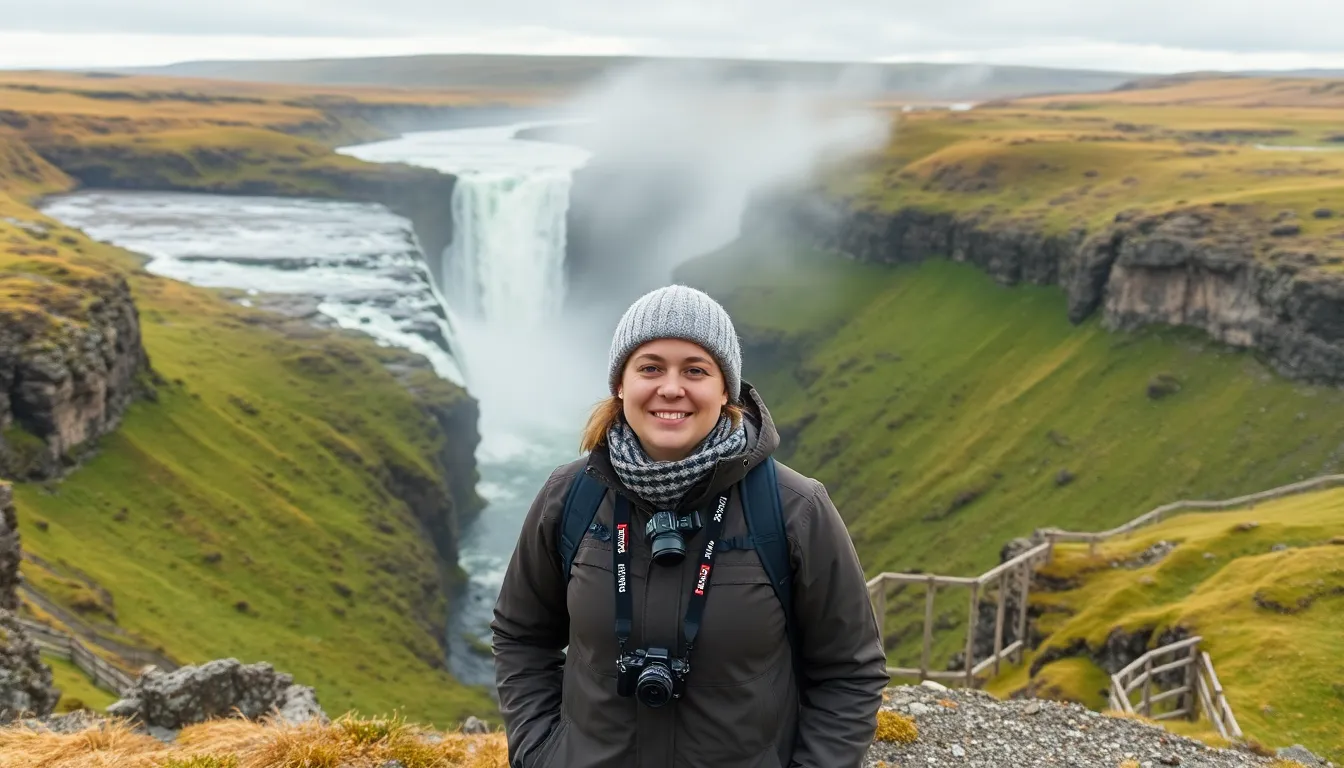Table of Contents
ToggleIceland’s a land of fire and ice, where majestic waterfalls tumble like they’re auditioning for a reality show and geysers erupt with the enthusiasm of a kid on a sugar rush. It’s the perfect destination for adventurers and daydreamers alike, offering breathtaking landscapes that’ll make anyone’s Instagram feed explode with envy. But before packing those thermal socks and a camera, there are a few tips to keep in mind.
Essential Iceland Travel Tips
Pack layers for varying weather conditions. Iceland’s climate changes rapidly, with temperatures fluctuating throughout the day. Dress in moisture-wicking and insulated fabrics for comfort.
Book accommodations well in advance. Popular locations fill quickly, especially during the summer months. Consider staying in guesthouses or cottages for a more local experience.
Rent a car for greater flexibility. Many attractions lie outside the capital, Reykjavik. A vehicle allows visitors to explore the Golden Circle and the South Coast at their own pace.
Prepare for limited daylight in winter. Iceland experiences only a few hours of sunlight during the winter months. Plan activities accordingly to make the most of the available light.
Always check road conditions. Severe weather can impact driving safety. Use the Icelandic Road and Coastal Administration’s website for up-to-date information on road status.
Respect nature and local regulations. Protecting Iceland’s fragile landscapes is essential. Stay on designated paths and do not disturb wildlife.
Try local cuisine for an authentic experience. Iceland offers unique dishes like lamb soup and fresh seafood. Exploring local eateries provides insight into Icelandic culture.
Bring a reusable water bottle. Iceland’s tap water is clean and drinkable, reducing plastic waste. Staying hydrated is key while exploring outdoor landscapes.
Prepare for the Northern Lights in winter. The aurora borealis often appears from September to April. Check local forecasts for the best viewing conditions.
Allow time for relaxation. The pace of Iceland invites downtime, whether soaking in hot springs or enjoying scenic views. Making time for leisure enhances the overall experience.
Best Times to Visit

Choosing the best time to visit Iceland depends on personal interests and activities. Each season offers unique experiences and landscapes.
Weather Considerations
Weather in Iceland can be unpredictable. Summer months, from June to August, feature mild temperatures averaging 55°F to 65°F, ideal for outdoor activities. In contrast, winter, particularly December to February, sees temperatures drop to around 30°F to 40°F. Snow and ice become prevalent, bringing breathtaking winter scenery. Packing layered clothing ensures comfort during sudden weather changes, providing flexibility for outdoor adventures.
Seasonal Highlights
Summer presents the Midnight Sun, allowing extended days filled with exploration. Travelers can enjoy hiking, birdwatching, and vibrant cultural festivals during this season. Winter showcases the Northern Lights, attracting visitors eager to witness this natural phenomenon. August hosts the famous Reykjavik Culture Night, celebrating local art and traditions. Each season offers distinct experiences that enhance the allure of Iceland’s natural beauty.
Packing Essentials
Packing effectively for Iceland enhances the travel experience. Prioritizing comfort and adaptability is crucial.
Clothing Recommendations
Dress in layers to adapt to fluctuating temperatures. Start with a moisture-wicking base layer that keeps sweat away. Add an insulating mid-layer like fleece for warmth. Finally, choose a waterproof and windproof outer layer to protect against rain and cold winds. Sturdy, insulated boots are essential for exploring rugged terrains. Accessories such as gloves, hats, and scarves ensure warmth, especially in winter months. Don’t forget to include a swimsuit, as geothermal pools are common and inviting throughout the country.
Gear for Outdoor Activities
Utilize high-quality gear for outdoor adventures. A durable, waterproof backpack is vital for carrying supplies. Bring a reusable water bottle to stay hydrated while hiking. Appropriate trekking poles provide stability on uneven surfaces. Opt for a camera to capture breathtaking landscapes. Binoculars enhance wildlife viewing, particularly for birdwatching enthusiasts. Consider packing a first-aid kit for emergencies, as well as sunscreen and sunglasses to protect against UV rays during sunny days.
Getting Around Iceland
Getting around Iceland requires a solid understanding of your transportation options. Travelers can choose from public transport, rental cars, or guided tours to navigate this beautiful country.
Transportation Options
Public buses serve many towns and attractions, making them a budget-friendly choice. Rental cars offer freedom, letting visitors explore remote regions at their own pace. Guided tours provide knowledgeable insights, often including stops at key sites. Domestic flights connect major cities, saving time for those traveling longer distances.
Driving Tips
Driving in Iceland presents unique challenges. Roads can be gravel or snow-covered, often requiring caution. Familiarize yourself with local traffic laws, as they differ from those in other countries. Focus on weather conditions, which change rapidly, especially in winter months. Utilize navigation apps to stay on track while exploring. Be mindful of wildlife crossing roads, especially in rural areas. Always check the road conditions via local websites before heading out.
Must-See Destinations
Iceland boasts incredible destinations that captivate every traveler. Exploring these sites enhances the experience.
Popular Attractions
Gullfoss waterfall impresses with its two-tiered, breathtaking cascade. The Golden Circle includes Þingvellir National Park, known for its geological significance and history. Seljalandsfoss invites visitors to walk behind its curtain of water for a unique view. Famous geysers like Strokkur erupt consistently, providing a thrilling spectacle. Reykjavik offers vibrant cultural experiences, including museums and lively nightlife. These attractions highlight Iceland’s natural beauty and rich heritage.
Off the Beaten Path
Less traveled routes reveal Iceland’s hidden gems. Snæfellsnes Peninsula attracts outdoor enthusiasts with its diverse landscapes, including rugged coastlines and quaint fishing villages. Húsavík, a small town, offers excellent whale-watching opportunities. Landmannalaugar features colorful rhyolite mountains and geothermal hot springs, ideal for hiking. Exploring the Westfjords uncovers dramatic fjords and secluded beaches, providing peace and serenity. Each destination contrasts sharply with well-trodden paths, enriching the overall Icelandic adventure.
Iceland offers a unique blend of breathtaking landscapes and rich cultural experiences. By following the travel tips outlined in this article, visitors can navigate the country’s diverse offerings with ease. Whether it’s embracing the adventure of outdoor activities or savoring local cuisine, every moment in Iceland promises to be memorable.
Planning ahead and being mindful of the weather will enhance the experience, ensuring travelers make the most of their time in this stunning destination. With its captivating beauty and vibrant culture, Iceland is sure to leave a lasting impression on anyone who ventures there.




